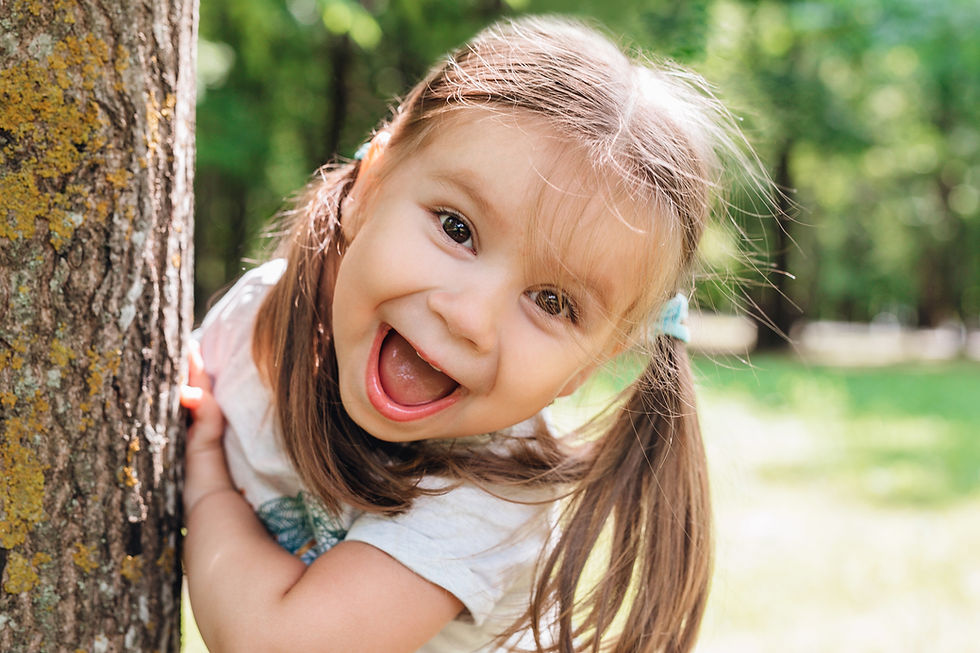Affordance in education, what are we talking about? What is the link with nature pedagogy?
- Lucie Demeulenaere

- Nov 21, 2023
- 3 min read
Definition
Affordance comes from the English verb to afford which means “to offer, to allow, to provide”.
Going back to the etymology of this word helps a lot to understand it. Affordance therefore represents the possibilities offered by an environment. Therefore, we often speak of affordances in plural, because our environment is very rich and so offers us a multiplicity of possibilities.
Concretely, you have probably already seen children using a cardboard box, a hiding place under the table, a shelter under the trees and saying “it’s a cabin/ a kitchen…”. The tree branch found in the woods becomes a spoon to mix the meal in its game. The tree trunk lying on the ground has become a bench or a stand to “sell ice cream” but it can also be used to help climb higher in the tree to hang a birdhouse.
Affordance therefore helps to strengthen children’s creativity and imagination, but not only…
What needs does the affordance meet? What is it for?
First and foremost, affordance meets a need for utility for everyone, whether adult or child. Have you probably ever climbed onto a chair to grab something from a height? It's affordance: A priori, the chair was designed to sit on, if you choose to use it for something else, you must therefore have evaluated its action potential to allow you to achieve your objective (which was to catch this object from a height).
This very simple example is widely used by very young children (under two years old) who are exploring the world. We regularly observe them using creativity to achieve their goals. This is all the easier for them as they do not always know the nature of the objects used.
From the age of 2 and throughout childhood, affordance will represent a fantastic way to engage in role-playing and imitation games. The affordance continues to develop children's creativity and imagination. Two essential qualities for children because they will help them adapt to changes and stand out in adulthood.

Thanks to affordance and therefore, by observing the action potentials of our environment and testing them to achieve their objective, children gain self-confidence. As they grow up, children discuss to find solutions. They can collaborate by asking:how do I build a shelter for animals? How to protect vegetable garden plants from the coming storm? How to prepare a table to have a meal in the middle of the forest?... Affordance is therefore an excellent tool to develop social connections.
How to develop affordance?
Affordance offers many possibilities whatever the age of the child. To develop it, the first tip is to leave the child free to play, without intervention of the adult. Boredom is useful for developing creativity. When children are bored, they explore the world differently: they look for new ways to have fun and, often, their games last longer because they have a lot of fun and they are proud to have found a game on their own.
Another tip is to offer games that don't look like everyday objects. Have you ever noticed that children play very well in the forest? Why ? Because twigs, tree fruits, leaves, earth, moss and all the treasures fill children's creativity. They can play for hours with just these items that don't look like everyday household items. Conversely, games that look exactly like characters or household tools generally attract children's concentration for less time because they provide fewer possibilities for games and stories. Give a dolls' tea set, it will only be used as a doll's tea set (or at least it will become increasingly rare for it to be used otherwise from 2-3 years old). Go into nature, every day the child will find a new game, this is the affordance.

Link with nature pedagogy
So I can't help but make the link with nature pedagogy. Nature, by definition, offers a multitude of possibilities for actions, games and learning. The affordance will allow children, teenagers and adults to develop creativity, imagination, self-confidence and social interactions.
Do you want to set up nature awareness workshops? Or do you want to train yourself/your team in nature education?



Comments